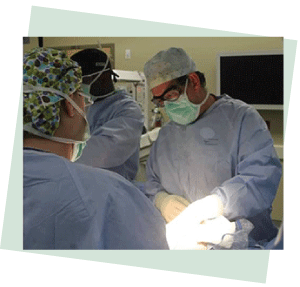
Hysterectomy A hysterectomy is a surgical procedure that removes the uterus in order to treat conditions like:
There are a number of different kinds of hysterectomy procedures:
There are 3 techniques for performing a hysterectomy: The vaginal hysterectomy removes the uterus through the vagina. Since the incision is inside of the vagina, the healing time might be quicker as opposed to abdominal surgery, and less pain during recovery. Vaginal hysterectomy results in less complications versus the other kinds of hysterectomy and is considered a very safe procedure. It’s also results in a briefer stay in hospital and a more rapid return to regular routines than abdominal hysterectomy. An abdominal hysterectomy sounds just like what it is – the uterus is accessed and removed through and incision in the lower abdomen. This form of hysterectomy provides the surgeon a good look at the uterus along with other organs throughout the procedure. This operation may be selected for those who have large tumors or if cancer could be present. Abdominal hysterectomy may necessitate a longer recovery period as compared to vaginal or laparoscopic surgery, plus it typically demands a longer stay in hospital. Laparoscopic hysterectomy uses a laparoscope to assist the surgery. A laparoscope is a thin, lighted tube which is inserted inside the abdomen by way of a small incision around or in the navel. It permits the surgeon to view the pelvic organs on a screen. Some other small abdominal incisions are prepared for other instruments utilized in the surgery. Hysterectomy is among the safest surgical procedures, however, just like any surgery, complications can occur. Common issues can include:
You will be encouraged to walk around at the earliest opportunity after your surgery. Walking will assist preventing DVT along with medicine or other care. You will probably experience some pain during the first few days following the surgery. Medication will be given to relieve the pain and you may experience vaginal bleeding and discharge for several weeks. Sanitary pads may be used following the surgery. During the first 6 weeks you should not put anything into your vagina, and this includes having sex, douching, using tampons and no tub baths.
|
|
 |
|